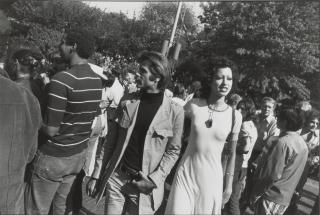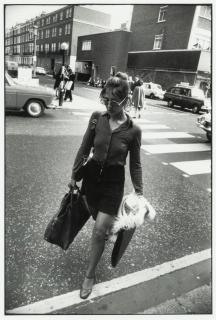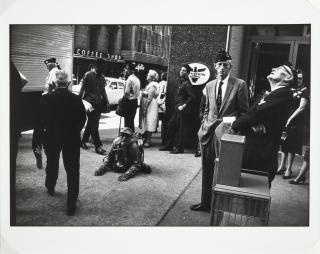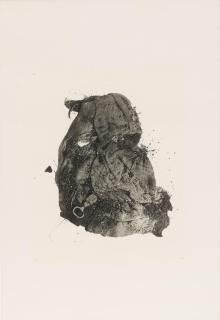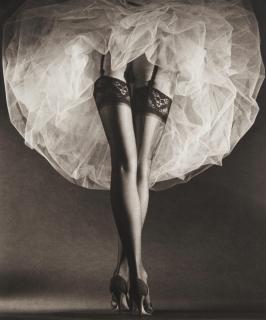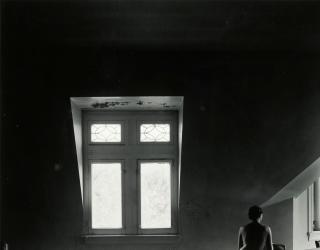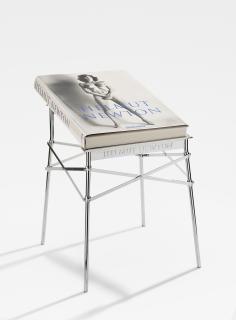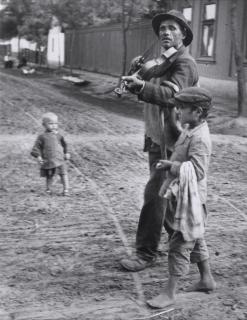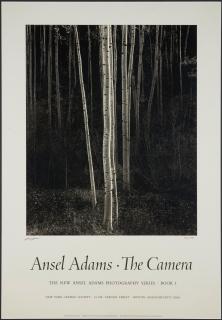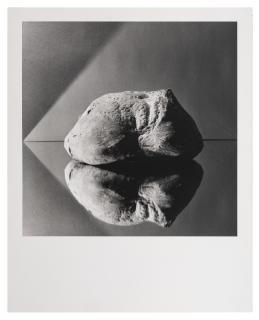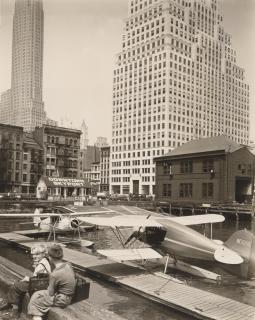Garry Winogrand 1928 - 1984
The artist Garry Winogrand
- US photographer who is considered the inventor of street photography.
- Captured social inequalities and everyday situations with his works.
- Received a Guggenheim Fellowship a total of three times.
Garry Winogrand, born 14.01.1928 in New York, deceased 19.03.1984 in Tijuana, Mexico, was an American street photographer. He made a name for himself with his works from the 1960s and 70s: They show a social cross-section of the USA and artfully depict both structural inequalities and everyday situations. Winogrand is sometimes even considered the founder of street photography.
The compositions from Winogrand's heyday demonstrate his precise understanding of photographic impact. Thus, although it was said that he could never stroll through the streets without taking photographs, that he photographed almost manically, his photographs did not come about at all indiscriminately. This changed, however, in his late creative phase shortly before his death, when he was harshly criticised for the lack of quality and artistic value in his works.
Winogrand began studying painting and photography at Columbia University in New York in 1947. Four years later, he simultaneously attended Alexey Brodovitch's photojournalism class. Immediately following his studies, he worked for the Pix Photo Agency in Manhattan for two years, then for Brackman Associates.
His artistic career began early: in 1955, two of his works were already shown as part of The Family of Man exhibition at the Museum of Modern Art in New York. The first solo show followed four years later at the Image Gallery. In 1963, MoMA again exhibited photographs by Winogrand. They were shown alongside the works of Minor White, George Krause, Jerome Liebling and Ken Heyman.
In the 1970s, Winogrand was awarded teaching positions at both the Illinois Institute of Technology in Chicago and the University of Texas at Austin. At this time, he was already receiving his third Guggenheim Fellowship, which he used to travel through the South and West of the country. There he documented the sometimes very contrasting social statuses of the people he photographed.
Most recently, Winogrand lived in Los Angeles and photographed random scenarios from the passenger seat of a car. This phase is partly seen as a marker of the disintegration of his artistic career. Winogrand received a Guggenheim Fellowship in 1964, 1969 and 1979 and published several volumes of photographs. He died on 19 March 1984 at the age of 56 in a clinic in Tijuana from the consequences of his cancer.
Der Künstler Garry Winogrand
- US-amerikanischer Fotograf, der als Erfinder der Straßenfotografie gilt.
- Fing mit seinen Werken soziale Ungleichheiten und alltägliche Situationen ein.
- Erhielt insgesamt dreimal ein Guggenheim-Stipendium.
Garry Winogrand, geb. 14.01.1928 in New York, gest. 19.03.1984 in Tijuana, Mexiko, war ein US-amerikanischer Straßenfotograf. Einen Namen machte er sich durch seine Arbeiten aus den 1960er- und 70er-Jahren: Sie zeigen einen gesellschaftlichen Querschnitt der USA und verbildlichen kunstvoll gleichermaßen strukturelle Ungleichheiten wie alltägliche Situationen. Winogrand wird teils sogar als Begründer der Straßenfotografie angesehen. Die Kompositionen aus Winogrands Hochzeiten belegen sein präzises Verständnis von fotografischer Wirkungskraft.
So hieß es zwar, dass er niemals durch die Straßen schlendern konnte, ohne zu fotografieren, dass er nahezu manisch fotografierte, doch kamen seine Fotografien ganz und gar nicht wahllos zustande. Das änderte sich allerdings in seiner späten Schaffensphase kurz vor seinem Tod, in der er zwecks mangelnder Qualität und mangelndem künstlerischen Wert für seine Werke scharf kritisiert wurde. Winogrand nahm 1947 ein Studium der Malerei und der Fotografie an der Columbia University in New York auf. Vier Jahre später besuchte gleichzeitig die Fotojournalistenklasse von Alexey Brodovitch.
Direkt im Anschluss an sein Studium war er zwei Jahre lang für die Pix Photo Agency in Manhattan tätig, anschließend für Brackman Associates. Seine künstlerische Laufbahn begann früh: 1955 waren bereits zwei seiner Arbeiten im Rahmen der The Family of Man-Ausstellung im Museum of Modern Art in New York zu sehen. Die erste Einzelschau folgte vier Jahre später in der Image Gallery. 1963 stellte das MoMA erneut Fotografien von Winogrand aus. Sie waren neben den Werken von Minor White, George Krause, Jerome Liebling und Ken Heyman zu sehen.
In den 1970er-Jahren wurden Winogrand sowohl am Illinois Institute of Technology in Chicago als auch an der University of Texas in Austin Lehraufträge zuteil. Zu dieser Zeit erhielt er bereits sein drittes Guggenheim-Stipendium und reiste damit durch den Süden und Westen des Landes. Dort dokumentierte er die teils sehr konträren sozialen Status der abgelichteten Personen. Zuletzt wohnte Winogrand in Los Angeles und fotografierte vom Beifahrersitz eines Autos aus zufällige Szenarien. Er starb am 19. März 1984 im Alter von 56 Jahren in einer Klinik in Tijuana an den Folgen seiner Krebserkrankung.
Garry Winogrand in a nutshell
Since many of his photographs have become famous, this question is difficult to answer. It's probably the photo of Marilyn Monroe during the filming of The Seven Year Itch, in which her white dress is whirled into the air through an air vent. Central Park Zoo (1967), one of Winogrand's most frequently exhibited photographs, has also become famous. It shows a black man and a white woman walking in Central Park in New York, each carrying a chimpanzee like child that has been dressed in human clothing. Other well-known images include Coney Island (1952) and New York World's Fair (1964).
Winogrand used a Leica M4, first with a 28mm lens, later with a 35mm lens. This small camera, which had been around since 1967, was very handy and therefore ideal for Winogrand's street photography. The Leica M4 was originally intended for travel photography.
He was a very busy photographer, taking an average of 400 to 500 photographs per day. It is estimated that there are nearly 6 million photographs of Winogrand. He took most of them in public places, zoos, beaches and sidewalks to document everyday life in mid-20th century New York. Most of the people photographed did not realize Winogrand had photographed them until the moment the picture was taken or later, if at all.
At the beginning of his career, Winogrand photographed as an advertising photographer for magazines and journals and worked as a street photographer on the side. In 1955, his first works were shown at the Museum of Modern Art in New York in the exhibition The Family of Man, but his breakthrough did not come until a few years later: in the highly acclaimed MoMA group exhibition Five Unrelated Photographers from 1963, 45 works of his were on display that established his fame. The other exhibitors were Ken Heyman, George Krause, Jerome Liebling, and Minor White.
Häufige Fragen zu Garry Winogrand
Da viele seiner Fotografien berühmt geworden sind, ist diese Frage schwer zu beantworten. Wahrscheinlich ist es das Foto von Marilyn Monroe bei den Dreharbeiten zu The Seven Year Itch, auf dem ihr weißes Kleid durch einen Lüftungsschacht in die Luft gewirbelt wird. Berühmt geworden ist auch Central Park Zoo (1967), eines von Winogrands am häufigsten ausgestellten Fotos. Es zeigt einen schwarzen Mann und eine weiße Frau, die im Central Park in New York spazieren gehen und jeweils einen Schimpansen wie ein Kind tragen, dem menschliche Kleidung angezogen wurde. Weitere bekannte Bilder sind Coney Island (1952) und New York World’s Fair (1964).
Winogrand benutzte eine Leica M4, zunächst mit einem 28-mm-Objektiv, später mit einem 35-mm-Objektiv. Diese kleine Kamera, die es seit 1967 gab, war sehr handlich und daher ideal für Winogrands Straßenfotografie. Die Leica M4 war ursprünglich für die Reisefotografie gedacht.
Er war ein sehr fleißiger Fotograf, der durchschnittlich 400 bis 500 Aufnahmen pro Tag machte. Man schätzt, dass es fast 6 Millionen Fotos von Winogrand gibt. Die meisten nahm er auf öffentlichen Plätzen, in Zoos, an Stränden und auf Bürgersteigen auf, um das Alltagsleben in New York Mitte des 20. Jahrhunderts zu dokumentieren. Die meisten der fotografierten Personen bemerkten, wenn überhaupt, erst im Moment der Aufnahme oder später, dass Winogrand sie fotografiert hatte.
Zu Beginn seiner Karriere fotografierte Winogrand als Werbefotograf für Magazine und Zeitschriften und betätigte sich nebenbei als Straßenfotograf. 1955 wurden seine ersten Arbeiten im Museum of Modern Art in New York in der Ausstellung The Family of Man gezeigt, doch der Durchbruch kam erst einige Jahre später: In der viel beachteten MoMA-Gruppenausstellung Five Unrelated Photographers von 1963 waren 45 Arbeiten von ihm zu sehen, die seinen Ruhm begründeten. Die anderen Ausstellenden waren Ken Heyman, George Krause, Jerome Liebling und Minor White.



